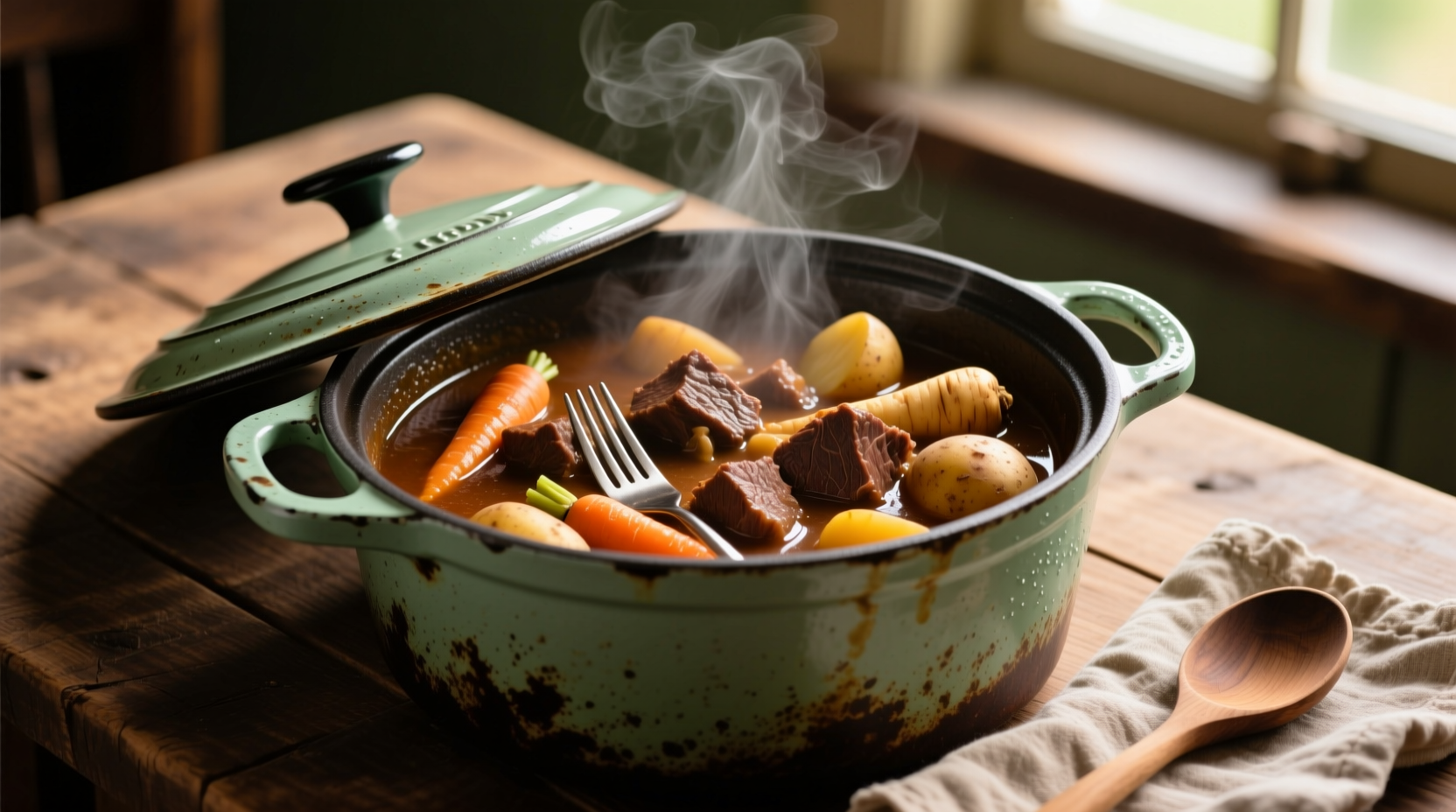Discover exactly how long to cook your stew in a crock pot for perfectly tender meat and rich flavors every time. This guide cuts through the confusion with precise timing based on meat type, cut size, and food safety standards—plus professional techniques to elevate your slow-cooked stews from good to extraordinary.
Why Timing Matters for Crock Pot Stews
Getting the cooking time right transforms tough cuts into melt-in-your-mouth perfection while developing complex flavors. Undercooked stew leaves meat chewy and connective tissues intact, while overcooked stew turns vegetables to mush and meat dry. The sweet spot depends on several factors that home cooks often overlook.
Your Stew Preparation Checklist
Before you even turn on your slow cooker, proper preparation sets the stage for perfect timing:
- Brown meat properly: Sear beef or lamb in batches to develop flavor through the Maillard reaction without steaming
- Cut vegetables uniformly: Chunky potatoes and carrots (1-1.5 inches) hold shape better during long cooking
- Control liquid levels: Fill crock pot only halfway with liquid—slow cookers trap moisture, so you need less than stove-top recipes
- Layer ingredients strategically: Place root vegetables at bottom (away from heat source), meat in middle, delicate items on top
Crock Pot Stew Cooking Time Reference
These times assume a standard 6-quart slow cooker filled halfway with ingredients. Always verify doneness using the methods in the next section.
| Meat Type | Cut | LOW Setting | HIGH Setting | Internal Temp |
|---|---|---|---|---|
| Beef | Chuck roast (2" cubes) | 7-8 hours | 3.5-4 hours | 145°F (63°C) |
| Lamb | Shoulder (1.5" cubes) | 8-9 hours | 4-4.5 hours | 145°F (63°C) |
| Chicken | Thighs (bone-in) | 5-6 hours | 2.5-3 hours | 165°F (74°C) |
| Vegetable | N/A | 6-7 hours | 3-3.5 hours | N/A |
Source: USDA Food Safety and Inspection Service guidelines for slow cooking
How to Test Stew Doneness Like a Pro
Timing guidelines are starting points—actual doneness depends on your specific ingredients and equipment. Use these foolproof tests:
- Fork tenderness test: Beef or lamb should shred easily with minimal pressure from a fork. If meat resists, continue cooking in 30-minute increments.
- Temperature verification: Insert a meat thermometer into the thickest piece. Beef/lamb should reach 145°F (63°C), poultry 165°F (74°C) for food safety.
- Gelatin check: Properly cooked stew has a slightly thickened, glossy broth from collagen breakdown. If broth remains thin, cook 30-60 minutes longer.
- Vegetable integrity: Carrots and potatoes should be tender but still hold shape. Mushy vegetables indicate overcooking.
Critical Food Safety Considerations
Slow cooking requires special attention to food safety. The USDA emphasizes that food must pass through the danger zone (40°F-140°F) within 2 hours. Modern crock pots meet this standard, but these practices ensure safety:
- Always start with refrigerated or frozen ingredients—never room temperature
- Preheat crock pot with 1 cup hot broth before adding ingredients for faster heat penetration
- Keep lid on during cooking—each lift drops temperature by 10-15°F and adds 20 minutes to cooking time
- For extra-large batches, consider finishing on stove to ensure even heating

Troubleshooting Common Stew Problems
Even with perfect timing, issues can arise. These solutions fix common crock pot stew problems:
Stew Too Thin?
Remove 1 cup broth, mix with 2 tbsp cornstarch, then stir back in. Cook uncovered on HIGH 15-20 minutes. Alternatively, mash some potatoes against the pot side to naturally thicken.
Meat Still Tough?
Continue cooking in 30-minute increments. Toughness usually means collagen hasn't fully broken down—this requires time, not higher heat. Add 1/4 cup acidic liquid (tomato paste or vinegar) to accelerate breakdown.
Vegetables Mushy?
Add root vegetables during the last 2-3 hours of cooking. For future batches, cut vegetables larger (1.5-2 inches) and place them higher in the pot where it's cooler.
Advanced Timing Techniques
Professional chefs use these timing strategies for superior results:
- The two-stage method: Cook meat 4 hours on HIGH to jumpstart collagen breakdown, then switch to LOW for remaining time
- Vegetable stagger: Add delicate vegetables (peas, zucchini) during last 30-60 minutes
- Finishing boost: Remove lid during final 30 minutes to concentrate flavors and slightly reduce liquid
- Resting period: Let stew sit 15-20 minutes after cooking—flavors meld and meat reabsorbs juices
When to Adjust Standard Cooking Times
These situations require timing modifications beyond standard guidelines:
- High-altitude cooking: Above 3,000 feet, add 5-10% more cooking time as water boils at lower temperatures
- Older slow cookers: Models over 5 years old may run cooler—add 30-60 minutes to cooking time
- Extra-large batches: When filling crock pot more than 2/3 full, increase time by 25%
- Frozen ingredients: Never add frozen meat directly—thaw first to prevent dangerous temperature zones
Storing and Reheating Leftover Stew
Proper storage maintains quality and safety:
- Cool within 2 hours of cooking—divide large batches into shallow containers
- Refrigerate for up to 4 days or freeze for 3 months
- Reheat to 165°F (74°C) on stove or in microwave
- Flavor often improves after 24 hours as ingredients meld











 浙公网安备
33010002000092号
浙公网安备
33010002000092号 浙B2-20120091-4
浙B2-20120091-4